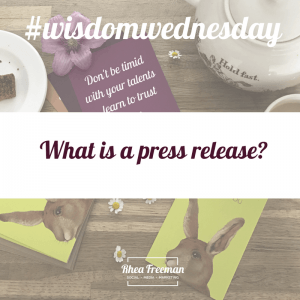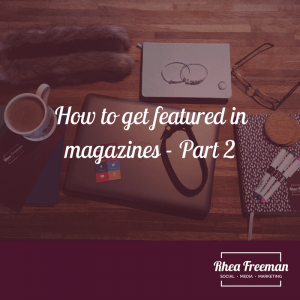 What is a press release? I get asked this quite a lot… and I think that in some ways the term is to blame. It can sound a bit daunting, but actually there’s no need to feel anything but excited about the good old press release. It can be a gateway into a world where your business, whether you’re product or service based, equestrian or country or something completely different, gets valuable column inches. And this can help to win you fans, followers and customers.
What is a press release? I get asked this quite a lot… and I think that in some ways the term is to blame. It can sound a bit daunting, but actually there’s no need to feel anything but excited about the good old press release. It can be a gateway into a world where your business, whether you’re product or service based, equestrian or country or something completely different, gets valuable column inches. And this can help to win you fans, followers and customers.
What is a press release?
When I talk about press releases, I mean a well written and concise document that informs its readers of new and newsworthy things happening inside your business. See. It doesn’t sound as scary now. And that’s good, because although the way we consume our news and content has changed (and we know that some magazines aren’t having the best time, let’s be honest here), the press release still works. Whereas historically a press release would only be sent to magazine editors, that’s no longer the case. Website editors should also make up part of your press list, and so should bloggers who might be interested in your kind of business. And what about influencers? Those people with large, highly engaged social media followings that can help you reach your target markets? The best way to inform these people (who you should already have reached out to and be communicating with!) about your new product or service is through a press release.
What should a press release be?
A press release is a way to convey your message to who you need to see it. It should be well written, free of typos and grammatical errors (we’re all human, but do your best, people appreciate it), not too long but not too short, with relevant contact details and a high res image.It should get to the point quickly, tell the reader what to expect further down in the intro, and not drone on about every aspect, carpet colour choice and sacking in the company’s history. This has no place in the main body of the press release. Unless it directly relates to the news story. So if you’re talking about a company’s 40th birthday, it might be useful to summarise the history. But when I say summarise, I mean in a short paragraph with the key facts and dates. If you’re talking about a new horse rug, the fact that there are three generations employed at the factory and they all enjoy afternoon tea once a week will be of little significance. OK. The latter would be a stretch on any day. Although you could create some nice social content around that. But that’s a different story. Press releases shouldn’t ramble. They should be concise. Don’t feel you need to write hundreds and hundreds of words. No one is reading them. Sorry, but it’s true. Editors don’t have the time. They want key facts presented well. They can then build a story about this if they need to add more information or they can use what you’ve sent. Or you might even be asked for more information.
So that’s what a press release is. It’s a concise way to convey new and newsworthy content to people who have the potential to spread your message to your target market. And it can do your business a lot of good. If you do it right.
Want to network with likeminded equestrian, country and canine small business owners? Come on over and join the Small & Supercharged group.

 In part 3 of how to get featured in magazines (
In part 3 of how to get featured in magazines ( Following on from
Following on from  for my clients. Each year I receive a media pack from each magazine. This includes a rate card, testimonials, facts, figures… and often a features list. Now, features lists aren’t set in stone and they can and do change, but particularly for monthly titles it gives you a good idea of what themes they’re following. Some features lists highlight buyers’ guides and product features, others show broad themes. And now it’s down to you. You need to put in the legwork.
for my clients. Each year I receive a media pack from each magazine. This includes a rate card, testimonials, facts, figures… and often a features list. Now, features lists aren’t set in stone and they can and do change, but particularly for monthly titles it gives you a good idea of what themes they’re following. Some features lists highlight buyers’ guides and product features, others show broad themes. And now it’s down to you. You need to put in the legwork.